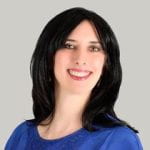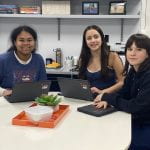On Friday, January 20, the Nuclear Weapons Group consisting of Ajev, Tyler, Erick, and Ajax interviewed a former missileer Lawrence Bullock. Tasked with being one of the two men who were situated at the launch zone. Armed with a pistol, both of the men had to turn the key at the same time, and once given the go to launch, had the ability to shoot the other missileer if they showed any signs of hesitation.
It turns out that despite general consensus that it was two men only, there was actually a third man behind the other two, armed with a machine gun who he too would shoot anyone if there were any signs of hesitation. Acceptance into the missile silos did not consist of any physically grueling training, but more so research about your back ground and past. Lawrence stated that you could be any citizen, regardless of your size or skin. But the government would track all of your history, all the way back to your childhood and keep a vigilant eye on any forms of a bad moment such as a robbery or time in jail. This would help them decide whether or not you would be loyal and dedicated to the nation to turn the key regardless of your perceptions on whether or not the nuke should be launched.
When soldiers would go in the silos, they wouldn’t leave it for 2 to 3 days. Meaning there would be no sunlight at all. The living quarters were somewhat decent, comprised of a gym, a kitchen, a place to sleep, and a work area. Lawrence went on to say that all of his peers went in the silos in countries in Europe which were situated at strategic geographical locations all across Central Western Europe which would be within striking distance of the Soviet Unions military locations. He said it was hell being there because civilians know you’re there. Lawrence and his peers thought that America was doing these countries a favor by aiding them in the standoff against the USSR, but it turned out that the civilians didn’t want nukes on their soil. Quoting Lawrence, “Once you’ve been in a country for a while; they don’t see you as an ally – They see you as an occupier”.
When asked upon how nuclear weapons modernized overtime, he said the equipment was more agile and had the ability to maneuver more quickly and had the ability to be launched much quicker than air dropped missiles/bombs. Currently, nuclear weapons hold enriched uranium which Lawrence said was “a lot more potent” than the bombs dropped on Hiroshima and Nagasaki in 1945.
Military spending would also alter depending on the presidencies. The Democrats, he said, would “try to undercut the military and take funding away”. He said the Democrats would try to find ways to ensure protection of the nation and the rest of the NATO nations through treaties and peaceful talks. The Republicans had the ideology that since they were the number one military, the only nation that could oppose them (The Soviet Union) military wise would be able to lead the race in terms of military power. Backtracking from military strength, but to technological strength in general, a lot of Americans had thought that the USSR was a bit more advanced than the U.S. due to the Soviets being able to be the first nation to send a man in a full orbit around the planet. The Republicans, especially Reagan, believed that a strong military would benefit the country, and they spent a lot of money to get high tech equipment.
In conclusion, it was hell for both sides, always military standoffs that marred many relations, all for a threat that resulted in nothing. But could it be worth it? Maybe all that military spending was the reason that there was no nuclear escalation, for fear of retaliation from the other side. Maybe no side decided to strike first, because they were scared of the capability of the other superpower. Nuclear weapons still today pose a massive threat to society, but those few men such as Lawrence Bullock have ensured that there has been no nuclear use since over 3/4 of a century ago.
Read more




















































